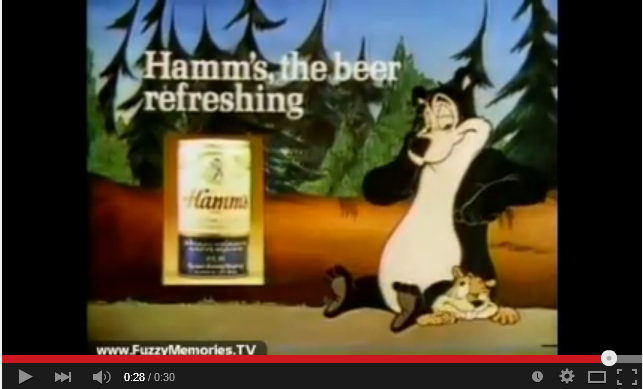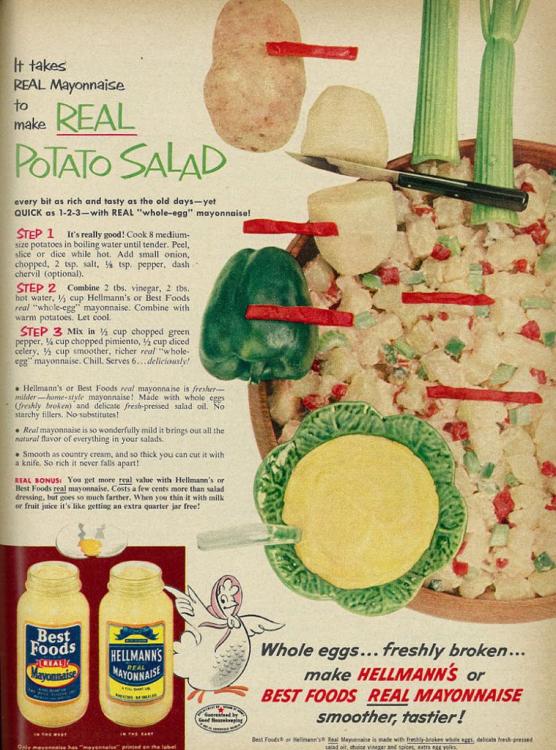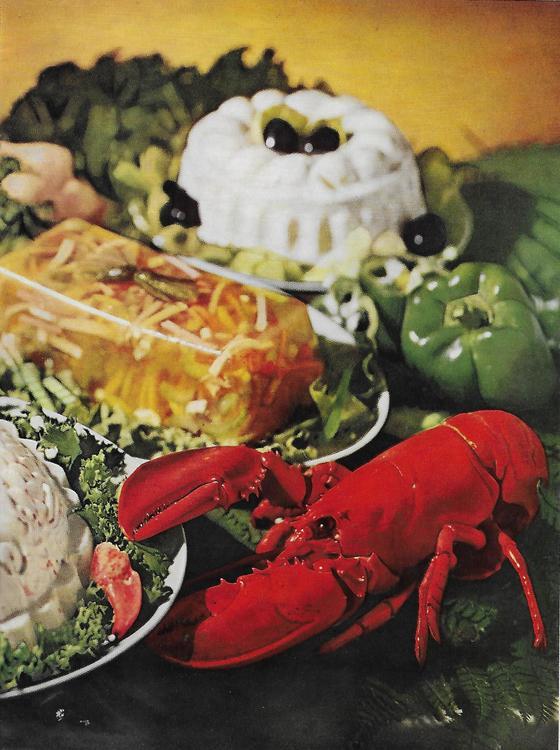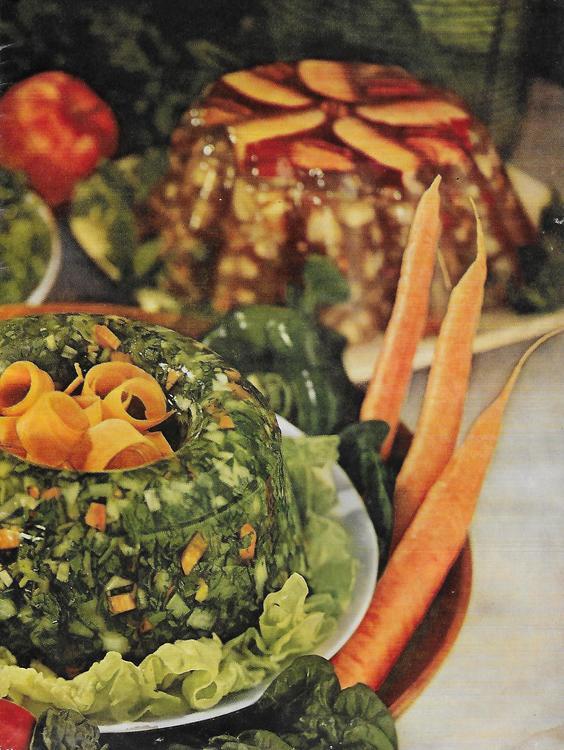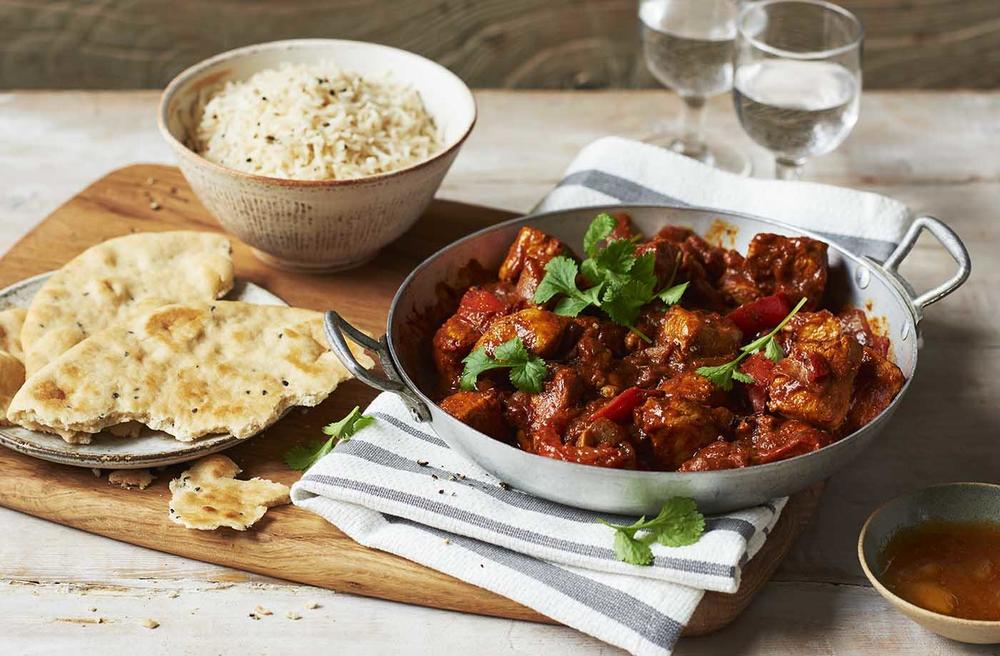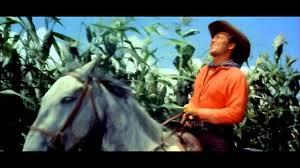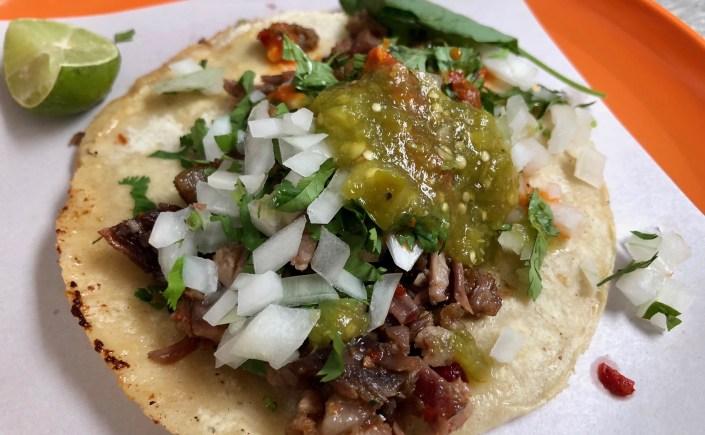Search the Community
Showing results for tags 'Cookoff'.
-
Every now and then since December 2004, a good number of us have been getting together at the eGullet Recipe Cook-Off. Click here for the Cook-Off index. For our third Cook-Off, we've chosen gumbo (or gumbo ya-ya), the roux-based cajun stew. Unlike char siu bao, at which I'm still a novice, I've been making gumbo since I first taught myself to cook in college, starting with Paul Prudhomme's recipe in his first book (which I was fortunate to watch the kitchen cook on a trip to K-Paul's in 1986), and working through virtually every recipe I've found. Gumbo is an astonishingly varied dish, much like cassoulet, about which there are great arguments concerning what must or must not go into the pot: gumbo file powder (ground sassafras), crawfish, andouille sausage, okra, fish, chicken, pork, hocks.... The agreed-upon basics involve a dark roux (flour and oil paste), to which diced onions, bell peppers, and celery are added, to which a hot stock is incrementally added, to which seasonings are added, absolutely including a good batch of ground chili pepper. From there, the sky's the limit. As it turns out, I made a massive batch of gumbo last night (with sides of collards, corn bread, and rice), most of which is being frozen for the arrival of Bebe, our daughter, due March 27 or thereabouts. I was able to use some wonderful fresh Maine shrimp and excellent monkfish tails, but: in my haste I didn't fry up the okra dipped in cornmeal to sprinkle on the top, the quality of the chicken turned out to be mediocre, and the "andouille" was chicken sausage from Whole Foods (please don't revoke my eGullet membership because of this -- ). But, like sex, even when homemade gumbo isn't good, it's GOOD, so I'm game for another batch real soon! So get out your digital cameras and stew pots!
-

Felafel/Falafel--Cook-Off 30
Chris Amirault posted a topic in Middle East & Africa: Cooking & Baking
Welcome to the eGullet Recipe Cook-Off! Click here for the Cook-Off index. This cook-off focuses on felafel. I've enjoyed fine felafel here in the US and overseas, but I have literally no idea how to make this, the national street food of at least a handful of Middle Eastern countries. Several people who have recommended this cook-off did so because, while they felt they had some clues, they didn't really have a consistently successful recipe or method. Sounds like a good cook-off topic, eh? There are a few topics on the felafel matter, including this one on tips and tricks, an older topic that finds more woes than techniques, and this preparation topic, How Do You Like Your Falafel? I also found this recipe by Joan Nathan, which seems like it might be useful. But what do I know? Not much, I'll tell you. Time to chime in, you! -
Hello friends and welcome back to a time-honored tradition--the popular eG Cook-Off Series. We're in the heat of summer right now and our gardens are literally blooming with all manner of peak of the season ripe fruits and succulent vegetables. And there's no better time of year to honor a vegetable that is often maligned as not being as colorful or trendy as the chi-chi breakfast radish or the multi-hued rainbow chard. In addition to not always being recognized for it's looks, every August and September it becomes the butt of jokes at State Fair competitions across the country. If you can get past the embarassment of seeing the poor devils dressed up and carved into silly, cartoon-like farm figures or pumped-up with organic steroids, you'll find a delicious, low-calorie vegetable packed with potassium and vitamin A. Yes friends, your dreams have come true for today we kick-off eG Cook-Off #62, "Summer Squash." (Click here http://forums.egulle...cook-off-index/ for the complete eG Cook-Off Index). According to the University of Illinois Extension Office, summer squash, (also known in some circles as Italian marrow), are tender, warm-season vegetables that can be grown anytime during the warm, frost-free season. Summer squash differs from fall and winter squash, (like pumpkins, acorn and butternut squash), because it is harvested before the outer rind hardens. Some of the most popular summer squash are the Green and Yellow Zucchini, Scallop, Patty Pan, Globe, Butter Blossom and Yellow Crookneck. My personal favorite summer squash is the versatile zucchini. Slow-cooked with sliced onion and ham hock, zucchini is perfectly comfortable nestled on a plate next to juicy, fried pork chops and creamy macaroni and cheese. But the chi-chi haute crowd isn't forgotten when it comes to zucchini, or, as the sniffy French call it, the "courgette." Tiny, spring courgette blossoms stuffed with herbs and ricotta cheese then dipped in tempura batter and gently fried are a delicacy found on Michelin-Star menus across the globe. Won't you please join me in crafting some delicious masterpieces that showcase the culinary possibilities of delicious summer squash.
-
It's quite appropriate that the Swedish Chef from The Muppet Show introduces the 75th Cook-Off in our series, eG Cook-Off 75: Meatballs. From the cafes of Stockholm, to the street stalls of Hong Kong and dinner tables across America, we love meatballs. Cooked in a thick, tangy sour cream sauce with lots of fresh dill, stewed in a spicy red sauce and served over spaghetti or my favorite, North African lamb merguez meatballs served with a cool cucumber raita sauce, meatballs span the global culinary map. Now while we often associate meatballs with large farm animals like cattle, swine and sheep--poultry, wild game and even seafood can be crafted into delicious meatballs. Elk meatballs served with huckleberry compote are a specialty of hunters throughout the wilds of Eastern Washington where I live. We might go trendy today and make French meatballs from minced duck and squab meatballs studded with pistachios and doused with cognac. So you see, meatballs open up our creativity and a hearty discussion in celebration of 75 delicious cook-offs. See our complete Cook-Off Index here: https://forums.egullet.org/topic/143994-egullet-recipe-cook-off-index/
-
Welcome to the eGullet Cook-Off XLIII. Click here for the Cook-Off index. In the past, we've taken a look at braised brisket in a topic devoted to anything and everything about the dish. This cook-off will dive even more deeply into that most complex of cuts. Ahhh, brisket...that wondrous cut of, in this case, beef (other animals have briskets too) - from the front part of the animal...take a look and see from where it comes... The brisket is the front part of the breast, and a whole boneless brisket weighs anywhere from 10 to 20 pounds. A brisket is generally divided into two parts, called the flat and the point, with the flat cut being leaner and the point cut having (imo) more flavor due to it's extra fat cap (btw, the point is often called the deckel). It is also an inexpensive cut that requires long, slow cooking to break down the collagen in the connective muscle tissues in order to achieve tenderness. The fat helps to keep it nice and moist. Briskets can be prepared in many ways. In some places, the whole brisket is smoked - low and slow, sometimes for as long as 24 hours. Lots of brisket is corned (a wet cure), and then cooked up with potatoes and cabbage, or, sliced and piled high on a sandwich, lunchtime dreams are fulfilled...often with pickles and cole slaw, but hold the mayo, please. In Asian cooking, brisket is often used as a wonderful base for soup - think beef pho, and you'll get the picture. Pastrami, by the way, is prepared in a similar way to corned beef - but dry cured and then smoked. Now, for our purposes and this cook-off, we're going to look at braised brisket. Whether you braise it on top of the stove or in the oven, wrapped in aluminum foil or naked, with wine, beef broth, water (liquids are necessary because this is braised brisket, after all) it's time to get out those heavy duty pots and pans, prepare your mirepoix, and share with us your most wonderful braised brisket recipes.
-
It's a nearly forgotten fruit, rarely thought of these days except by old-soul cooks with a farming heritage. Utter the word 'rhubarb' and watch the listener's face contort as though the poor devil had just bitten into a lemon. Some decry rhubarb as an invasive species that crowds out the dainty pansies in the flower bed. Yet their disgust of rhubarb is simply due to ignorance. Like the gooseberry, rhubarb can't be fairly judged by gossip alone -- one must savor it firsthand to discover the wondrous tastes that lie within. You can find rhubarb in commercial pies in the grocery store, but rarely in its purest form--it's often watered-down with the ubiquitous strawberry. The most talented and creative professional chefs of our day covet rhubarb for its red pastel color, floral perfume and tart flavor--the perfect accompaniment to a rich slice of sautéed foie gras. Yes, my friends, rhubarb is back in vogue and summer is the perfect time to welcome back our cherished eG Cook-Off series with rhubarb in the leading role. (Click here http://forums.egulle...cook-off-index/ for the complete eG Cook-Off Index). Rhubarb - pronounced 'roo-barb' - is known as the pie plant. It is a member of the buckwheat family and is a perennial, meaning it grows back every year. And boy does it ever! Rhubarb has a preference for warm, sunny climates, yet it is perfectly at home in the rainy environs of the Willamette Valley in Oregon. Originally from Asia, rhubarb was first used for medicinal purposes. In the 18th century, the British brought rhubarb into the kitchen. By the late 1700's, rhubarb had journeyed across the Atlantic with the British and landed in the soils of early America. By 1947, the United States Customs Court of New York had officially declared rhubarb a fruit, although to this day many scientists consider rhubarb a vegetable. Rhubarb is low in calories yet high in phosphorus, potassium, magnesium, iron and vitamins, though one should avoid the leaves which contain large amounts of poisonous oxalic acid. Because it is so tart, rhubarb does require a fair amount of added sugar. Aside from pie, rhubarb works wonderfully as a condiment for roasted meats. The tart flavor and sweet perfume of rhubarb accents duck, game, pork and lamb. Sweet or savory, rhubarb does not discriminate. Please join me in creating, crafting and sharing the wonders of rhubarb.
-
Last Fall we debuted our Apple Cook-Off and we were not disappointed. From Gravensteins to Granny Smith, Red Delicious, Golden Delicious, Braeburn, Northern Spy and Pink Lady, we presented you with Apple Springrolls, Apple Butter, Apple Tartlets, Roast Pork with Apples, Apple and Chestnut Stuffing and a concoction of Apple Juice, Apple Cider and Kentucky Bourbon Whiskey. (Click here http://forums.egulle...cook-off-index/ for the complete eG Cook-Off Index). Apples are a worthy fruit no doubt, but today we enter into a more passionate and exotic realm of fruit cookery with the launch of eG Cook-Off #68: Citrus Fruits. Late January is the peak of the citrus season. At least it is up here in the Pacific Northwest, where nary a blood orange or key lime ever drops from a local tree. This time of year our markets are groaning with huge orbs of Texas grapefruit, pommelos from Mexico, oranges from Florida and exotic citrus flown in from far-flung Asian ports. Our neighbors to the South, the agri-wonderland of California, delivers mandarins, minneolas and blood oranges to Spokane within just a few days of being plucked from the tree. And I can’t get enough. I’ll never forget the huge grapefruits, larger than two fists, that Mother would serve us for breakfast. She indulged our sweet tooths by showering the cut halves of fruit with sugar. We never had to struggle with scooping out the meaty supremes. Like a fine surgeon, Mother cut the fruit precisely so we’d be able to maneuver every tangy, sweet segment using the serrated silver spoon handed down by my Grandmother. I imagine my Grandmother Edna May Pink serving freshly squeezed grapefruit juice in small, hand-cut crystal glasses as a “first-course” at her ladies' bridge club luncheons. Or maybe a simple dessert course of a broiled half grapefruit studded with a candied cherry and served in a wide crystal goblet, the little silver spoon to the side. Oh, the memories of grapefruit. One fondly dreams of the warm, boozy, classic French “Baba Au Rhum” surrounded by a center of “glace' oranges” and decorated with tiny, crisp, candied tangerine leaves to close the curtain on a grand feast at L'atelier de Joel Robuchon in Las Vegas. I long for a suckling baby pig, no more than 12 pounds, turning ever so slowly on the rotisserie spit over glowing embers of white oak, the sweet scent of a pineapple-tangerine glaze dripping onto the coals as the crackling, golden skin shines. For our Cook-Off, I’m thinking of starting with a lemon souffle recipe that was served during the reign of Edward VII. Citrus fruits were rare at the time and even the overly indulgent Edwardians considered them expensive, only to be served on important occasions. It's that time my friends. You have resolved to lose weight in the New Year. To eat better and to exercise. For a cook, that means challenging oneself to exercise creativity in the kitchen using a fruit that decidedly brings energy and good health. So off you go. Begin crafting your dish, create a shopping list and present us with "fruits" of your labors. Welcome to eG Cook-Off #68: Citrus Fruits. Broiled Grapefruit-
-
Beer. How does one introduce the subject of beer into a culinary arena? Like our two previous Cook-Offs (Apples and Citrus), the genre of beer cookery is vast—so overwhelming that it's hard to know where to start. At eGullet we have the answer; welcome to eG Cook-Off #69: Cooking with Beer. (Click here http://forums.egulle...cook-off-index/ for the complete eG Cook-Off Index). My first experience with beer wasn’t of the drinking persuasion, yet rather, an agricultural education in the 60’s about those tall, creeping vines that look like overgrown marionberry bushes. As a kid growing up in the Willamette Valley in Western Oregon, I was born into the land of hops—the plant whose fragrant flowers impart beer with a floral, herbal perfume and bitter, yet sweet flavor. My father worked for the Oregon Department of Agriculture and one of his primary responsibilities was working with commodity commissions to promote Oregon products to the world. I was destined to inherit my father's love of the bounty of Oregon and the wonder of hops. During the hot, lazy days of August, Father would drive us through the lush farmlands just north of Salem that are home to some of Oregon’s finest hop farms—communities like Woodburn, Gervais and Hubbard (home of the Oregon Hop Commission). To a novice, seeing how hops grow for the first time is stunning—a high-wire act of row after row of thick vines climbing toward the sky through a vast grid system of twine, wire and towering poles. Once harvested, Oregon hops are shipped worldwide and end up flavoring a huge variety of different styles of beer—everything from Budweiser, Coors Light and Miller Genuine Draft to trendy, artisanal styles of beer like IPA’s, Pale Ales, Stouts, beers flavored with raspberries and apricots, and the rare yet coveted smoked porters. Today, Oregon is known for being home to a number of highly-praised artisanal breweries, but growing up in the 60’s, my parents' taste for beer was simple, a sign of those times: https://www.youtube.com/watch?v=EZh66cyCCE8 Mother didn’t include much beer in her cooking, but in the summer she would braise locally-made German sausage in beer, handing them off to Father to grill on the Weber along with a mixture of sweet peppers and onions from the garden. Unlike seasonal, geographically limited ingredients, beer sees no boundaries. Yes, we’ll see seasonal beers spiked with pumpkin in the fall and apricots in the spring, but the crafting of beer, and thus cooking with beer, isn’t dependent on a seasonal growing cycle like most fruits and vegetables. And think of the storage advantages of beer. It doesn’t need a temperature-controlled environment nor does it spoil if it isn’t used within three days. Buy beer today and cook with it next month if you wish. A good starting point for cooking with beer is to consider the flavors that go into the making of beer—the grain, the water, the malt, the hops and flavoring agents, the style of the particular beer—then build your dish on those flavors. Beer-Braised Venison Stew in a rich, dark, stout beer gravy or silky Alaskan Black Cod napped with a sauce made from rare smoked porter—the possibilities of cooking with beer are endless. I'm working on a dish of braised beef cheeks, caramelized onions and puff pastry studded with English stilton. Let's get cooking with beer.
-
https://www.youtube.com/watch?v=VRIUbFLjtX0 Fortunately, Lloyd only got the accent wrong. “Shrimp on the Barbie” was a catch phrase that grew out of the smash-hit 1986 film “Crocodile Dundee” starring rugged Australian Paul Hogan. Yet Australians and Austrians alike, folks the world over for that matter, share a taste for shrimp grilled over an open flame. Summer is the perfect time to introduce our latest Cook-off, eG Cook-Off #70, Shellfish Grilled Over an Open Flame. (Click here http://forums.egulle...cook-off-index/ for the complete eG Cook-Off Index). Wikipedia defines shellfish as a term for “exoskeleton-bearing aquatic invertebrates including various species of molluscs, crustaceans and echinoderms.” However, biological language can often be confusing, (at least to a humble home cook like me), so I include clams, mussels, oysters, cockles, scallops, shrimp, lobster, crayfish and crabs under the umbrella of shellfish. Sea urchin, cuttlefish, octopus and squid also fall under the guise of the term “shellfish.” Culinary definitions aside, never restrain yourself when it comes to creativity during a Cook-Off. While grilled lobster with drawn butter is a classic, what about grilled lobster with smoked paprika butter and grilled pineapple salsa? A new take on grilling shellfish. I for one am stocking my grilling pantry with the fixings of a spicy Northwest seafood stew—clams, mussels, Dungeness crab, prawns, salmon and halibut—all cooked over an open flame. I’m also pondering a bowl of steaming miso broth, thick rice noodles and grilled oysters. As for the fire? In the Pacific Northwest we favor alder and fruitwoods for a flavorful yet mild smoke that allows the seafood to be the star of the dish. If briquettes or propane flames your fire, Bob’s your Uncle. http://www.pond5.com/stock-footage/11778127/man-woman-serve-barbecue-bbq-1960s-vintage-film-8mm-retro-ho.html My Father (not the poor fellow in this video), wrapped shellfish and salmon in foil and put it on the barbecue. We were having “barbecued” seafood for dinner. For years I wondered, “what’s the point?” We were simply steaming sweet, succulent Oregon shrimp in foil with lemon and butter. It was delicious for sure, but I wondered where the “barbecue” flavor was coming from. I wouldn’t think of wrapping shellfish in foil today—I want that char, those blackened, caramelized bit, that smoky flavor to come through when I grill shellfish over an open flame. Go clam digging. Trap a crab. Net some crayfish. Visit your fishmonger. Let’s grill some shellfish.
-
How many noodles does it take to make soup? Instant Ramen Noodles that is. As we’re about to find out, Ramen is much more than a “Cup O’Noodles.” Today, we launch a new adventure in our revered eG Cook-Off Series with eG Cook-Off #72: Ramen. The history of Ramen is somewhat sketchy, but it appears as though it was a creation of the Chinese—a bowl of fresh wheat noodles in a hot broth garnished with a few pieces of leftover meat and a sprinkling of chopped vegetables. The dish crossed the sea and Ramen stalls began to show up in Japan by 1900, often serving as a cheap, quick lunch for the working class. Ramen grew in popularity in Japan and eventually made its way to the United States, joining other quick and convenient culinary inventions gaining popularity in America like frozen TV dinners, frozen pizza, Chef Boyardee canned spaghetti and ravioli and Lipton’s dried noodle soup mixes. Today, America sates its appetite for instant ramen noodles to the tune of nearly 5 billion of the disposable cups every year. Yet, we like to play with our food these days and manipulate it into something mass-produced in a factory to the point where it has no resemblance to its namesake. When it comes to ramen, we’ve allowed convenience and 39 cent cups of noodles to satisfy our salty, contemporary tastes. And how. Americans have been slurping through instant noodles for decades without stopping to uncover the real story of ramen. I count myself, (not too proudly), as one of millions of college students who stashed cups of instant ramen noodles in dorm rooms--a quick snack after a late-night round of studying, (or partying). As I scanned the shelves of a local Asian market this morning, I counted over 200 different varieties and brands of what most of us (in other words me), associate as Ramen. There were packets and bowls of Shin Black Ramen, Japanese Shio, Bean and Jin Ramen, Shrimp, Clam and Spicy Seafood Flavor and “Fun and Yum” Ramen. But I also discovered that not all instant noodles are labeled ramen. There were Kimchi, Pad Thai and Tom Yum noodle cups. There was Japanese Curry flavor, Spicy Miso and “Sobai” dried noodles in single packs, 5 packs and the popular case size—literally a packing box full of instant noodles for just a few bucks. True Ramen is much more than dried noodles and powdered flavorings. Rooted in Japanese cuisine, Ramen embraces a deeply satisfying, herbal, mysterious, earthly-scented, steaming broth paired with silky, soft noodles, hearty meats and seafood and fresh, crisp vegetables. It is, as they say, a perfect bowl. Ramen is all the rage in restaurants and home kitchens alike right now, and while staying true to the classic foundations of the dish, all manner of delicious variations of Ramen are being crafted with beef tongue, lamb hocks, bottarga and salted broccoli. Ramen has even made its way into motion pictures, (The Ramen Girl, 2008), showcasing how this common dish in its truest form bonds people together. Please join me in exposing the delicious depths of ramen. We’ll debate the similarities and differences between “Ramen” and “Soba,” and we’ll present our own personal Ramen creations. Slurping is encouraged. See our complete Cook-Off Index here: https://forums.egullet.org/topic/143994-egullet-recipe-cook-off-index/
-
Raspberries, blackberries, loganberries, marionberries, gooseberries and huckleberries. Peaches, apricots, plums and pluots. And don’t forget the cherries. Pies and ice cream. In a cake, a clafouti or a cookie. Cobblers, crisps, compote’s and Betty’s. Whichever fruit you pick, whichever recipe you choose, there’s no denying the sweetness, the juiciness, the lushness of summer fruits. Yet we never limit our creativity at eGullet, so let’s go beyond the boundaries of sweet dishes and showcase the piquant notes of summer fruits in savory recipes. Blackberry jelly with grilled quail you say? Summer fruits evoke fond childhood memories—the ultimate expression of the words “farm-to-table.” And we each have our own coveted summer fruit recipes, and for me that means the huckleberry, the wild, elusive berries that grow in the high mountain reaches of my native Pacific Northwest. Summer fruits don’t need a lengthy introduction, no limitations on your creativity are necessary. I for one have a number of dishes I’ll be sharing, and I know you’ll enjoy me in tasting the bounty of summer fruits. See our complete Cook-Off Index here: https://forums.egullet.org/topic/143994-egullet-recipe-cook-off-index/
-
A gargantuan haunch of beef for Christmas dinner, ca. 1957 As a child in the late 1950's, our Holiday table was graced with turkey at Thanksgiving.....and another turkey at Christmas. It wasn't until the 1970's that my Father finally made good on his Christmas promise to "give us a Christmas Goose" by actually cooking one. To this day, I remember how little meat there was and it was dark, tough and chewy. We had indeed been given a Christmas Goose! Yet in later years Father (who always coated the meat with some type of rub), and Mother (who cooked the roast), redeemed themselves and cooked regal prime ribs of beef for Christmas dinner. The Holiday roast, (as my UK friend Helen calls it), is a thing of beauty and an adventure for cooks around the globe. And while turkey and prime rib still reign supreme, I for one like to venture to the farm and forest to procure other delights for the Holiday roast. Right now I have duck (which will be slow-roasted and served with prized wild huckleberries) and a leg of lamb in the freezer, but I'll be adding some wild Scottish grouse, wood pigeon and a fresh American ham to the larder for roasts throughout the Holiday season. Please join me in celebrating the Holiday roast with a special eG Cook-Off. We place no boundaries or regulations on your cookery. Whether it's sous vide, stuffed, smoked, barbecued or braised, roasted, grilled, broiled, fried or flamed, all manner of cooking techniques are welcome into the discussion and feast. See our complete Cook-Off Index here: https://forums.egullet.org/topic/143994-egullet-recipe-cook-off-index/
-
Fall is but a whisper of the recent past--at least it is where I live in the upper reaches of Eastern, Washington. We had our first fluff of snow a week ago and a reasonable November storm is predicted for this weekend with temperatures holding at a chilly 18 degrees at night. Along with the rumblings of cold winter weather and Holiday feasts, we turn our culinary musings to time-treasured, comfortable dishes. And so I invite you to join me in another kitchen adventure--the inimitable eG Cook-Off Series. In 2013, we've tackled the tricky cooking of Squid, Calamari and Octopus and we made delicious dishes out of the humble Summer Squash. (Click here http://forums.egulle...cook-off-index/ for the complete eG Cook-Off Index). But today we're shunning all manner of counting calories, salt or fat content--for what is rich in flavor is good for the soul my dear friends. Please join me in crafting, nuturing and savoring a dish of Confit.
-
Welcome back to a time-honored, cherished eG tradition, the eG Cook-Off Series. Today were venturing into a new world for Cook-Off's. Member Kerry Beal came forward with a Cook-Off idea we just couldn't pass up--Pork Belly--and inspired a new idea for future Cook-Off's. Knowing we're a community of great culinary minds, we'll be inviting the Members to send us ideas for potential future Cook-Off's, (more information to come later). Take it away Kerry and let's raid the larder and start cookin.
-
“Then he would peel apples from Normandy, and cut them into thin, even half-moons, and toss them in a bowl of white wine…beat eggs and cream and nutmeg into a custard, and fill the shallow crust half full. He took the apple slices from the bowl one by one, almost faster than we could see...and laid them in a great, beautiful whorl, from the outside to the center, as perfect as a snail shell. He did it as effortlessly as a spider spins a web.” MFK Fisher, 1908-1992 Mary Frances Kennedy Fisher was arguably one of the greatest food writers of the 20th century. A poet and a storyteller, Mary Frances welcomed us into her kitchen through the art of the written word. She tempted us to step into her world of food, painting a picture in our minds of a simple fruit crafted into a fragrant, sweet, apple tart. As Fall approaches, I reflect on MFK’s memories of the apple and it serves as the inspiration for another volume in our popular eG Cook-Off series: Apples. (Click here http://forums.egullet.org/topic/143994-egullet-recipe-cook-off-index/ for the complete eG Cook-Off Index). A mere two hours drive from my home, Wenatchee, Washington, is known as the “Apple Capital of the World.” We’re just now starting to see the early apples in our markets, but the peak season in Washington will run from September into October. Let’s put on our aprons, practice rolling pastry dough and pairing apples with something decadent like truffles and foie gras. It’s time for an Apple Cook-Off. Washington Pink Lady Apple-
-
Wings – who doesn’t like them*? In the past, we’ve had plenty of chicken dishes in our Cook-Offs, such as Fried Chicken (#5), Kebabs, Satays and Skewers (#24), Chicken & Dumplings (#51) and Grilled Chicken (#53), but somewhat surprisingly we’ve missed the probably most popular chicken part outside the dieter's classic “101 ways to cook a chicken breast”. With the Football collegiate national championship game just around the corner and next month's Superbowl casting its shadow already, I feel it is more than appropriate to kick off the 2022 edition of our popular Cook-Offs with a dish you all will be eating (and hopefully making) a lot in the upcoming weeks. Even if you are not a football afficionado you should chime in to run a few tests until National Chicken Wing Day in July … Now, similar to the accompanying sport, the humble wing itself can be the center of almost religious zealousness and dispute. Is it “just” a wing, a hot wing or maybe a “real” Buffalo wing – and if either SV'ed, fried, baked, smoked and then coated with which hot sauce, which butter, which ratio between the two? And what do you serve with it? If you find one recipe, you’ll find at least two guys disputing its authenticity. But this is not what this Cook-Off is about – this one is about what you like and make and what you want to share (at least virtually) with us. Hey, we will not even judge if you decide to take the bones out and make Modernist Cuisine's famous (& fancy) boneless teriyaki chicken wing … Equally wholeheartedly contested is which part of the wing makes for the better fried wing** … are you a drums or flats kind of guy/girl ? Do you cut off the wing tip? Do you skewer the whole thing ? And since we are talking merely avian body parts: does it always have to be chicken ? Or maybe duck, goose, turkey or even … ostrich ? And flavorwise, there is far more in the world of wings than the average dweller in the west might have on a regular basis: my family and I, for example, particularly enjoy Korean-style wings, baked & basted with a gochujang-based glaze. I am sure we’ll find other tasty examples from across the globe. So, I hope I’ve made a convincing pitch for the wing. All is left is me looking forward to some strong & enthusiastic participation, and really there is no excuse this time: Quick, inexpensive & tasty, with everyday to gourmet potential – let the Wing games begin! See the complete eG Cook-Off Index here: https://forums.egullet.org/topic/143994-egullet-recipe-cook-off-index/ * the ornithological variety, not Paul McCartney's venture after the Beatles … ** actually, we should all save us some time and agree it is the flat.
-
When I think of Potato Salad, I think of my mother and paternal grandmother. Summer picnics and backyard parties are the first memories that come to mind. But I came to realize that not all potato salads are the same. My grandmother kept her recipe basically the same. Usually russet potatoes off the ranch and farm she and my grandfather owned in Central Oregon. She would add mayonnaise, out West "Best Foods" was her mayonnaise of choice if she didn't make it from scratch. She would add a bit of yellow mustard, some vinegar and chopped canned pimentos. (Today we'd do something she would have called "fancy" and add fire-roasted red peppers). Sometimes Grandma would add chopped, hard-boiled eggs to her potato salad. My mother was more adventuresome with her potato salads. She usually used Russets since she grew up in Idaho potato country and my grandfather had a small business that sold burlap sacks to potato farmers. On occasion she would use "new potatoes," either red or white. We didn't have potatoes called "baby" or "fingerlings" back then. Sometimes she added chopped dill pickle, hard-boiled eggs or diced celery. If my father had his way, she would make his potato salad with Miracle Whip. I wouldn't touch the Miracle Whip potato salad. One thing my mother and grandmother always agreed upon was the potato salad had to be on ice in the metal ice chest so the mayonnaise wouldn't spoil and make us all sick at the picnic. Mother didn't limit her potato salad cookery to the summer months. In Fall and Winter she made a hot German potato salad and served it with sauerkraut and German sausage we bought from a German butcher in a small farming town. She boiled russet potatoes and cut them into thick slices. The dressing was made by frying bacon, then draining the bacon and crumbling it into bits. Into the skillet with hot bacon grease she added onions and apple cider vinegar and tossed the potatoes with the hot dressing. Instead of diced celery she seasoned the salad with celery seeds and lots of cracked black pepper. It seems as though potato salads are uniquely tied to family, yet cross borders in terms of variations and ingredients. Let's join together and share our family memories, present old favorites and create some new variations of potato salad. See the complete eG Cook-Off Index here: https://forums.egullet.org/topic/143994-egullet-recipe-cook-off-index/
-
Summer is the best time of year for a cook. The time of year when the bounty of Mother Nature is literally at our fingertips each day. One of the stars of any summer table is the variety of cane berries that grow throughout the season. Many people haven't heard the term "cane berry." The most well-known cane berries are the raspberry and the blackberry. Raspberries and blackberries can be found year-round in the supermarket sitting in small plastic clamshell containers and commanding a high price. Yet there are other delicious cane berries that are absent from the supermarket but are just as juicy and delicious. Summer delivers the loganberry and boysenberry and other regional favorite cane berries. I hail from the Willamette Valley in western Oregon where we proudly introduced the marionberry in 1956. (The marionberry is a cross between the Chehalem and Ollalieberry that grown in regions west of the Cascade Mountains). Cane berries are part of the rose family of plants. And like roses, cane berries have long stems (canes), some are studded with prickly little thorns. Some say that the fruit of a cane berry has the sweet fragrance of rose petals. One thing we can all agree on is that cane berries adapt well to changes in the weather, but the thrive in hot sun. Yet the cane berry doesn't always have a glowing reputation. Some people consider the blackberry to be a noxious weed that flourishes alongside rural roadsides and along creeks and canals. By the end of summer a wild blackberry patch can literally consume a road. I've seen helpless county road crews try to wrangle with a blackberry patch only to see it come back even stronger just a few weeks later. Cane berries have numerous possibilities when it comes to the kitchen and bar. They go into cocktails and cordials, cobblers, pies and pastries. And it doesn't end at the doorstep of sweets. Cane berries add tart, sweet, fruit flavor to grilled meats, blended into compotes, chutneys and rich meat reduction sauces. I happen to like cane berries in a summer salad with soft triple crème cheese then tossed with a classic French vinaigrette. Let's take a trip to the local farmer's market or trek into the blackberry row and pick some ripe, sweet berries to present at the table of eG Cook-Off #78: The Cane Berries of Summer. (See the complete eG Cook-Off Index here.) Oregon Marionberries-
-
The summer salad is often regarded as summer food's unpopular kid. Sure, potato, pasta and egg salads are the standard bearers of summer salads, yet they seem stuck in a time warp in terms of creativity. When I was growing up in the 1960's, the only "exotic" summer salad Mother served was a gelatin mold studded with shredded carrots and surrounded by heaps of Miracle Whip dotted with green olives. We dreaded seeing Mother parade that salad out of the kitchen and put it on the picnic table yet we grudgingly ate it lest we disappoint her. Yet we should not ignore the basic elements of the summer salads of yesteryear. One can easily use the concept of gelatin, fruits, vegetables and seafood into a contemporary and delicious salad that is perfect for the hot days of summer. Summer salads are well-adapted to a variety of cooking and preparation techniques, from poaching, grilling and roasting, to chilling, preserving and deep-frying. And a summer salad benefits from a bevy of garnishes, cheese, spices and fresh herbs from the garden. Let's join in the fun and present our summer salad bowls in eG Cook-Off #79: Resurrecting and Rethinking Summer Salads, Summer Food's Unpopular Kid. (See the complete Cook-Off Index here, https://forums.egullet.org/topic/143994-egullet-recipe-cook-off-index/)
-
Curry. Throughout India, from Goa, to Kerala and Gujarat, into Burma, Thailand, Japan, Europe, North America and across the world, curry transcends boundaries and cultures, weaving a mosaic of flavors and textures along the way. And while the reach of curry spans the world, at its core it is a regional, personal dish that isn’t defined by one recipe or one ingredient. The genesis of curry points to archaeological evidence dating to 2600 BC, showing the use of a mortar and pestle to grind spices including mustard seed, fennel, cumin and tamarind to flavor foods. The earliest Roman cookbooks detail recipes of meats seasoned with black pepper, cumin, lovage, mint, marjoram, cloves and coriander. The Mughal Empire in the 15th century influenced curry in Northern India and it spread throughout the continent. The establishment and growth of the spice trade further spread the popularity of curry across the oceans. The British developed a taste for curry early on, highlighted by the Art of Cookery published in 1758 by Mrs. Hannah Glasse. “To make a Currey the Indian Way”-take two small chickens, skin them and cut them as for a fricafey…..take three large onions, chop them small and fry them in about two ounces of butter, then put in the chickens and fry them together until they are brown, take a quarter of an ounce of turmerick, a large spoonful of ginger and beaten pepper together and a little salt to your palate, put in a quarter pint of cream and the juice of two lemons and serve it up.” So what makes a curry a curry? Is it the seasoning? The spices? Do the spices have to be toasted and then pounded in a mortar and pestle? Does curry mean there is a sauce, or does meat rubbed with curry fit the bill? And is curry always made into a sauce, and is the sauce always red, green or yellow? Soup or stew? Served with rice or a certain type of bread? Of course the possibilities are endless and these are some of the questions we’ll be discussing. What about meat? Many curries follow strict religious practices and so meat isn’t used, but do any vegetables work in a curry? Do you serve your curry with rice, bread and other condiments? As food fads fade as fast as they appear on the scene, we turn to dishes like curry that have survived and thrived for millennia. Today we introduce the 80th entry into the eG Cook-Off Series, eG Cook-Off #80: The aromatic, exotic flavors of Curry. (see the complete eG Cook-Off Index here https://forums.egullet.org/topic/143994-egullet-recipe-cook-off-index/ )
-
Ah, the avocado! For many of us, this humble little fruit inspires only one dish. Yet the avocado has a culinary history that is deeper than we may understand. The avocado (Persea Americana) is a tree thought to have originated in South Central Mexico. It’s a member of the flowering plant family Lauraceae. The fruit of the plant - yes, it's a fruit and not a vegetable - is also called avocado. Avocados grow in tropical and warm climates throughout the world. The season in California typically runs from February through September, but avocados from Mexico are now available year-round. The avocado has a higher fat content than other fruits, and as such serves as an important staple in the diet of consumers who are seeking other sources of protein than meats and fatty foods. Avocado oil has found a new customer base due to its flavor in dressings and sauces and the high smoke point is favorable when sautéing meat and seafood. In recent years, due in part to catchy television commercials and the influence of Pinterest, the avocado has seen a resurgence in popularity with home cooks and professionals. Walk into your local casual spot and the menu will undoubtedly have some derivation of avocado toast, typically topped with bacon. Avocados have found a rightful place back on fine dining menus, but unfortunately all too often over-worked dishes with too many ingredients and garnishes erase the pure taste and silky texture of an avocado. When I think of an avocado it’s the Hass variety. However, a friend who lives in Ft. Lauderdale, Florida, can buy Choquette, Hall and Lulu avocados in the local markets. This link provides good information about the different varieties of avocados, when they’re in season and the differences in taste and texture. https://www.foodrepublic.com/2012/10/18/know-your-avocado-varieties-and-when-theyre-in-season/ I for one must challenge myself to start eating and cooking more avocados. I think my recipe for guacamole served with chicharrones is superb, and the cobb salad with large chunks of ripe avocado is delicious, but as a close friend recently said, “one person’s ‘not especially new’ is another’s “eureka moment.” Well said and as history tells us, we’ll find plenty of eureka moments as we discuss and share our tales and dishes of avocado during eG Cook-Off #81: The Avocado. Fun fact: The name avocado derives from the Nahuatl word “ahuacatl,” which was also slang for “testicle.” See the complete eG Cook-Off Index here https://forums.egullet.org/topic/143994-egullet-recipe-cook-off-index/
- 134 replies
-
- 7
-

-
- Mexican
- Vegetarian
-
(and 1 more)
Tagged with:
-
https://www.youtube.com/watch?v=O5APc0z49wg "There's a bright golden haze on the meadow There's a bright golden haze on the meadow The corn is as high as an elephant's eye And it looks like it's climbing clear up to the sky Oh, what a beautiful mornin' Oh, what a beautiful day I've got a beautiful feeling Everything's going my way" As Gordon MacRae sang in Oklahoma in 1955, it is indeed a" beautiful mornin" and a beautiful time of summer when the corn is "as high as an elephant's eye." It's the season of fresh sweet corn. Sweet corn is a hybridized variety of maize with high sugar content. Also called sugar corn or pole corn, sweet corn is the result of a naturally occurring spontaneous mutation in the genes which control the conversion of sugar to starch inside the corn kernel. Sweet corn was grown by several Native American nations and was introduced to European settlers in 1779 by the Iroquois. It soon became a popular food in the southern and central regions of the United States. Unlike field corn, which is harvested when the kernels are dry and mature, sweet corn is picked when the kernels are moist and sweet at what scientists call the "milk stage." Once the corn reaches maturity, the process of converting sugar to starch is quick. Varieties of sweet corn are typically divided according to their sugar content, their color and the number of days it takes to mature. Sweet corn varieties mature anywhere from 65 to 86 days. Those that mature in 70 days or less are typically considered early summer varieties. Thus, sweet corn has a short harvest season but freezes and cans well so we can enjoy it throughout the year. The science and horticultural details of sweet corn are interesting, but my Father had a shorter, clearer example. He held a degree in agriculture from Oregon State University and worked for the Oregon Department of Agriculture for over 30 years. On Sunday drives through the Willamette Valley east of Salem, we drove by many cornfields "as high as an elephant's eye." "That's sweet corn there." He instinctively could tell the difference between sweet corn and what he called "feeder corn," (field corn), by the way it looked, how it was growing and how the field was planted. Feeder corn is the term we used to describe corn that was grown and harvested for livestock feed. Premium corn indeed, but not the sweet corn we'd buy at the local farm stand in August. Yakima, Washington Sweet Corn Field From Latin America to Malaysia, China to India and the United States, sweet corn is used in hundreds of different dishes. I personally like an ear of corn simply boiled until soft then slathered with salted butter. Another favorite is grilled corn added to creamed corn with bacon and served with grilled chicken or quail. One of my sweet corn favorites is scorned by other family members-summer succotash with sweet corn, lima beans, and peppers. This season I've been thinking about a dish I recently saw on "Trails to Oishi Tokyo" on NHK broadcasting. The Japanese hold high regard for sweet corn from how it is cultivated, harvested and used in cooking. I've been thinking about sweet corn tempura with a simple dipping sauce with grated daikon radish. Let's join together and share the virtues of sweet corn and our best corn dishes. See the complete eG Cook-Off index here: http://forums.egulle...cook-off-index/
-
Salmon. From Japan to Scandanavia and Scotland, from the Pacific Northwest to the Atlantic seaboard, wild or farmed, salmon is served on tables around the world. Salmon has provided sustenance and cultural meaning for thousands of years. In the Sahaptin language of Native Americans of the Pacific Northwest, the word for salmon used in sacred ceremonies is “wy-kan-ush.” Combined with the word “pum,” meaning people, the tribal cultures of the Columbia River Basin are often referred to as “Wy-Kan-Ush-Pum” or “Salmon People.” Each year in late spring anticipation builds for the start of the annual Copper River salmon runs in Alaska. Alaska Airlines stages a grand affair to welcome the annual fishery. The first Copper River Salmon is flown to Seattle on a chartered flight where local Chefs compete right at the airport to create new dishes using this legendary Pacific Northwest salmon species. In Norway, salmon is pronounced “laks” or “lakse.” The Norwegian heritage fosters a deep respect for the natural environment, especially the sea, the crystal-clear waters of the fjords, and their inhabitants. (According to the Norwegian Seafood Council, Norway is the second largest exporter of seafood in the world, sharing sustainable wild-caught and ocean-farmed seafood with more than 150 countries). Now, salmon does present us with a problem…a good problem: how to choose among all the great ways to prepare and serve salmon? I reckon that’s a pretty good problem to have! Raw in sashimi or sushi, grilled on alderwood planks over an open fire, salted, brined, cured and then smoked, lox-style on a bagel, encased in pastry ala the Russian “coulibiac style,” or poached in a light fish stock accented with tarragon, salmon provides us with endless recipes and cooking techniques. With that introduction, we invite you to join us in eG Cook-Off #82: Salmon where we’ll share recipes and stories of salmon. Read the complete eG Cook-Off Index here https://forums.egullet.org/topic/143994-egullet-recipe-cook-off-index/
-
Ginger. The exotic, ugly little knob that releases and intoxicating perfume with flavor notes of pepper, citrus and tropical fruit. Yet none of those words fully describes ginger. It's only after we peel back the outer skin that we get that first waft of the unmistakeable scent of ginger. Ginger is a flowering plant whose rhizome, or root, is widely used as a spice, but also for medicinal purposes. Ginger is part of the same family of plants that includes tumeric, cardamom and galangal. Ginger originated in Southeast Asia, and is reported to have been domesticated some 5,000 years ago. It became a valuable trade commodity in the spice trade, and was used by the Greeks and the Romans. Of course, we think of ginger in cuisine, and ginger isn't just used in Asian dishes. However, a look at worldwide ginger production is also a reflection of the span of ginger across the globe. The top producer of ginger is India, followed by Nigeria, China, Indonesia, Nepal and Thailand. But that's just a small part of the story of ginger. Ginger is used in all sorts of cuisines from around the world. Ginger isn't simply the knobs in the supermarket produce section. Travel to your local Asian, Indian, International or Mexican market and you'll find different varieties and cousins of ginger. For years I always wondered what those little spears were that garnished Japanese dishes. Was it some sort of vegetable or fruit. It wasn't until I became an avid fan of Japanese cooking programs that I learned about "young ginger." Ginger that is harvested when young. Sometimes pickled, young ginger is crisp, clean and refreshing yet not as strong as older ginger. Likewise, I was always intrigued by those little knobs at the local Asian market that looked like ginger but tiny in size comparison. So I bought a little. And got a big surprise. Fresh galangal is very spicy, almost hot like a chile, and highly fragrant and flavorful. It's sold fresh and also dried and gives soups an incredible depth of flavor. Well, as you can see, we have a lot of cooking to do. Let's join together and celebrate, discuss and present our best ginger dishes. This is eG Cook-Off #84: Ginger. See the complete The eGullet Cook-Off Index here.
-
Street Tacos with Salsa Verde, Le Merced Market, Mexico City Mexican Salsa. It can be hot and numbing to the tongue, sweet or bitter, made with red tomatoes or green tomatillos, dried, roasted or fresh chiles, grilled pineapple, chopped, diced, chunky or blended smooth. Salsas can be raw or cooked, or use a combination of raw and cooked ingredients. And the style of the salsa, the heat and the flavor, should be matched to the dish you serve it with. The two most common types of salsa most people think of are Salsa Roja, better known as red sauce, often mild and sweet in flavor. Salsa Fresca usually takes the form of Pico de Gallo, which translates to "rooster's beak." Pico de Gallo is simple to make using just a few ingredients. But salsa is of course much more diverse. Some Mexican salsa recipes borrow from condiment recipes in Asia and use heady amounts of ginger. Pico de Gallo is good with homemade tortilla chips, but it might not be the right choice for every dish. A fresh tomatillo and Manzano chile salsa is delicious with grilled snapper, while a grilled pineapple salsa is best with butter pound cake and crema. Matching the complexity and flavor of a salsa with the dish is akin to pairing the right wine with food. The techniques used to make a Mexican salsa also vary. The Maya made salsa by hand using a molcajete or mortar and pestle type of tool. Today, a blender or food processor makes the job go by quicker, but the mortar and pestle still has its place, as does making salsa by hand with a good kitchen knife. The comal is a flat, smooth griddle used throughout Mexico, Central and South America to cook tortillas, toast spices and sear meats. It's also used to toast dried chiles to bring out their smoky flavor before blending them into a salsa. Comals are typically made of steel, flat or with a low outside rim. I use both a comal or a cast-iron skillet to toast onions and garlic to add char and bring out sweetness before adding them with other ingredients and blending into a salsa. Charred, toasted onion and garlic in a cast-iron skillet. Let's come together in our home kitchens and present and savor our favorite Mexican Salsas. In the tradition of the eG Cook-Off Series, this is eG Cook-Off #85: Mexican Salsa. See the complete eG Cook-Off Index here: https://forums.egullet.org/topic/143994-egullet-recipe-cook-off-index/




